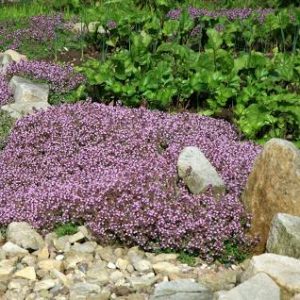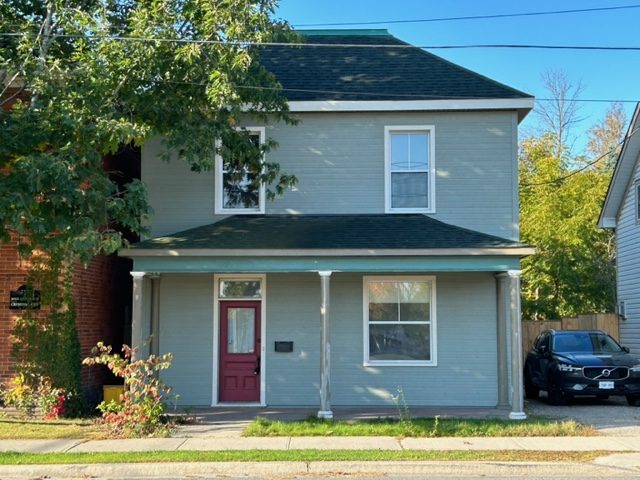We are back! And amazingly, work on the ‘Little House’ itself is virtually complete. Only a few bibs, bobs and some tweaking remain to be completed. It’s been quite a journey – but as with all projects on this scale, it is not quite over yet and patience is a ‘must.’ There are still some ‘sustainable’ features to be added, along with the landscaping – the plan for which is in process. Most of the landscaping work won’t be done until spring 2024; however, it seems like a good time to share some of our early thinking and first steps.
Consistent with a ‘Little House,’ the backyard is not very big (24’ by 30’). It’s fenced in, with three lovely tall pines along the back fence, a small raised deck and a south-facing orientation. Ideal for what I’d like to do, which is to create a sustainable back yard.
As part of the building permit process a lot grading survey was required, which has been very helpful in considering where and how to handle storm run-off and even the sump pump’s output. We decided to create a small pond to one side, about 10 feet inside the rear fence. The sump pump output will go out, underground, into this pond, where it can seep more slowly into the property’s sandy soil. Ditto with the eavestroughs, though there will be rain barrels in place at the foot of each trough to capture run-off from the roof,.
I mentioned the sandy soil . . . . unexpectedly, the Little House is perched on a primarily sandy patch. It’s unexpected, because the environs (like Orillia’s) are primarily limestone and shield. The lot is situated on a hill, so the natural flows are away from the house and a minimum of grading is required. To help ensure a good base for next spring’s plantings, I have ordered a half truckload of top soil which we’ll rake in this fall and let settle, so we’ll be ready to go in the spring.

I’ve decided to use ground cover for most of the yard. Ground cover offers a broad choice of plantings, while helping to reduce environmental impact and my carbon footprint. Its ability to capture and compost fallen leaves from nearby plants helps create a better natural system in the garden that is similar to how plants grow in nature. This can reduce maintenance and often increases fertility and garden health.
Why ground cover and not a lawn? Perhaps, if the space was bigger, I might have considered some grass – particularly as I do have a dog and she will need a spot. However, at the heart of my decision is that I feel lawns–and in particular, sodded lawns—are not as environmentally friendly as ground cover with native plantings.
Lawns are lovely, but they take away natural habitat, require maintenance (including chemicals) and most of all . . . I am troubled by sod. My apologies in advance for any offense taken, but that’s a lot of top-soil that gets scooped up every year just to give people an ‘instant lawn.’ Perhaps I’d feel less anti-lawn if they were all grown from seed. Grass is beautiful and I’m so glad we can enjoy grassy spaces around our homes, in our parks and in nature. I simply prefer them to be natural and that they share the space with other, more native and natural habitats.
So back to ground covers – as lawn replacements, they offer significant benefits. They do not require mowing, trimming or edging—or the requisite gas or electricity to perform these tasks on turf. They require little in way of fertilizers, herbicides and pesticides and demand far less water than a grassy expanse.
As alternatives to hardscape surfaces such as pavers and concrete, ground covers improve the livability of an urban environment. They keep the ground cool and prevent the absorption and storage of summer heat, which along with my ‘Three Pines’ will keep this small space cool during the increasingly number of hot days ahead. And finally, as hinted above, natural plantings are an opportunity to support pollinating birds and insects–critical partners in our journey to a more sustainable future.
Lately, here in Orillia, there has been some concern and media coverage about the enforcement of a current by-law (1988-46-834,2.1) that requires homeowners to remove weeds or grass more than 8 inches in height. Defining what is a weed and what isn’t a weed will likely be challenging for homeowners and authorities. However, it’s important to note that the by-law goes on to exempt ‘natural gardens’ and defines that to mean any vegetation growth that is deliberately planted. So on behalf of the bees, the birds and the better health of our communities, I hope others will consider natural plantings and ground covers for the outdoor spaces around their homes.
Meanwhile, back at the ‘Little House,’ we’ve learned a great deal and invested a lot on this journey. Happily, it has all been worthwhile, to see the ‘Little House’ become both a little bigger and a lot more sustainable along the way. Next spring – in addition to the plantings, installation of a solar system and EV charging station—we will plan to arrange a post-retrofit energy audit.
We will report back on our overall progress at that time… Meanwhile here follow these links for the earlier articles in this series.
Part I – The ‘Little House’ – a Sustainable Journey. ‘https://sustainableorillia.ca/the-little-house-a-sustainable-journey/”
Part II – The ‘Little House’ – Leaks, Drafts, Doors and More! ‘https://sustainableorillia.ca/the-little-house-leaks-drafts-doors-and-more/”
Part III – The ‘Little House’ – In Search of a Net Zero Heating & Cooling System. ‘https://sustainableorillia.ca/the-little-house-part-3-in-search-of-a-net-zero-heating-and-cooling-system/”
Part IV – The ‘Little House’ – Insulating and Ensuring a Sustainable Future. ‘https://sustainableorillia.ca/the-little-house-is-back-insulating-and-insuring-its-future-sustainability/”

